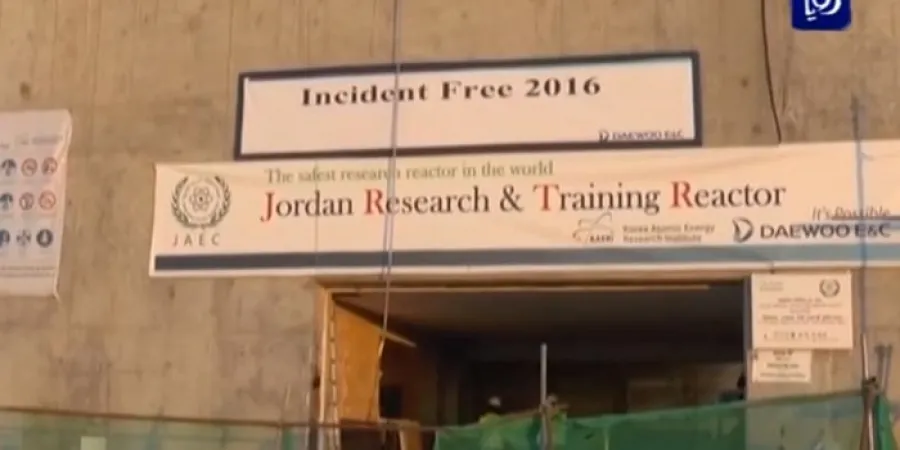Watch: First Peek Inside Jordan's Nuclear Research Reactor
The reactor, which is located in the far north of the country (Ar Ramtha), has a capacity of 5MWt. It was built with the assistance of the Korean Atomic Energy Research Institute and Daewoo Engineering and Construction
Ami Rojkes Dombe
| 22/11/2017
"The walls inside the cavernous main hall of the Jordan Research and Training Reactor are painted yellow, but the water filling the 10-metre-deep pool in the center of the room gives off the electric blue glow characteristic of these units," The National reported after visiting the Jordan Research and Training Reactor, otherwise known as JRTR.

[Courtesy Jordan Research and Training Reactor]
"During the visit, the reactor is shut down, but since this plant went 'critical' – meaning it moved into a configuration in which nuclear fission could occur and be maintained on its own – for the first time in April last year, a minimum number of staff must be on site 24 hours a day, seven days a week, including at least two people in the main control room."
According to the report, the reactor was built to assist in nuclear industry research, produce radioactive isotopes for industrial applications and medical research and diagnostics, and for training personnel in nuclear operations. This last function will be critical as Jordan builds full-scale nuclear plants for electricity generation.
The reactor, which is located in the far north of the country (Ar Ramtha), has a capacity of 5MWt (Megawatts thermal) and a lifespan of about forty years. The cost of the project was $160 million.
For the JRTR, Jordan partnered with a South Korean consortium, just as the UAE did for the four nuclear power plants it is building, the first of which comes online next year.
The manager of the Jordan Research and Training Reactor is Dr. Samer Kahook, who also serves as the Nuclear Fuel Cycle Commissioner for the Jordan Atomic Energy Commission. The nuclear fuel cycle is the most sensitive issue with regard to Jordan's nuclear aspirations.
The reactor, which is located in the far north of the country (Ar Ramtha), has a capacity of 5MWt. It was built with the assistance of the Korean Atomic Energy Research Institute and Daewoo Engineering and Construction
"The walls inside the cavernous main hall of the Jordan Research and Training Reactor are painted yellow, but the water filling the 10-metre-deep pool in the center of the room gives off the electric blue glow characteristic of these units," The National reported after visiting the Jordan Research and Training Reactor, otherwise known as JRTR.

[Courtesy Jordan Research and Training Reactor]
"During the visit, the reactor is shut down, but since this plant went 'critical' – meaning it moved into a configuration in which nuclear fission could occur and be maintained on its own – for the first time in April last year, a minimum number of staff must be on site 24 hours a day, seven days a week, including at least two people in the main control room."
According to the report, the reactor was built to assist in nuclear industry research, produce radioactive isotopes for industrial applications and medical research and diagnostics, and for training personnel in nuclear operations. This last function will be critical as Jordan builds full-scale nuclear plants for electricity generation.
The reactor, which is located in the far north of the country (Ar Ramtha), has a capacity of 5MWt (Megawatts thermal) and a lifespan of about forty years. The cost of the project was $160 million.
For the JRTR, Jordan partnered with a South Korean consortium, just as the UAE did for the four nuclear power plants it is building, the first of which comes online next year.
The manager of the Jordan Research and Training Reactor is Dr. Samer Kahook, who also serves as the Nuclear Fuel Cycle Commissioner for the Jordan Atomic Energy Commission. The nuclear fuel cycle is the most sensitive issue with regard to Jordan's nuclear aspirations.



